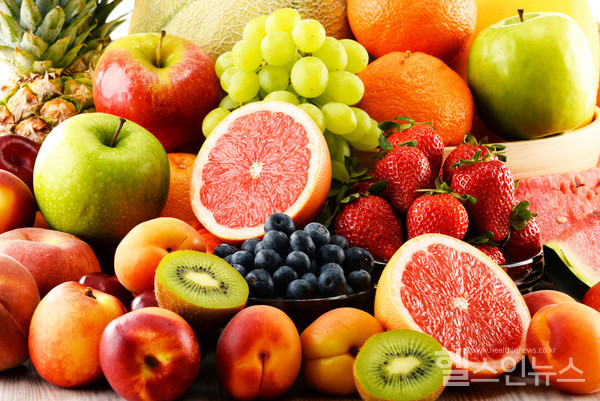Best Fruits for Toddlers Under 3 & Fruits to Avoid: A Parent’s Guide
Best Fruits for Toddlers Under 3 & Fruits to Avoid: A Parent’s Guide
Introducing fruits to your toddler is an essential step in building a healthy and balanced diet. Fruits are packed with vitamins, fiber, and natural sugars, helping to support growth, digestion, and immunity. However, not all fruits are suitable for toddlers under 3—some can pose choking hazards or cause digestive issues.
In this blog, we’ll explore the best fruits for toddlers, their nutritional benefits, and fruits to avoid or introduce with caution.
1. Best Fruits for Toddlers Under 3
Here are some of the best fruits that provide essential nutrients while being easy to digest and safe for young children.
🍌 1. Bananas
✅ Why It’s Great:
- Soft and easy to chew.
- High in potassium, which supports muscle and nerve function.
- Contains fiber, aiding digestion and preventing constipation.
✅ How to Serve:
- Mash for younger babies.
- Cut into small bite-sized pieces for toddlers.
🍎 2. Apples (Cooked or Grated for Safety)
✅ Why It’s Great:
- Rich in vitamin C and antioxidants for immune health.
- High fiber content for digestive support.
✅ How to Serve:
- Cook and mash for younger babies.
- Grate or slice thinly for toddlers to reduce choking risk.
🚨 Caution: Avoid raw apple chunks as they can be a choking hazard.
🍓 3. Strawberries
✅ Why It’s Great:
- Packed with vitamin C, boosting immunity.
- Contains antioxidants that support brain development.
✅ How to Serve:
- Mash for younger toddlers.
- Cut into small, soft pieces for older toddlers.
🚨 Caution: Some babies may have strawberry allergies, so introduce gradually.
🍐 4. Pears (Soft & Ripe)
✅ Why It’s Great:
- Gentle on the stomach, great for constipation relief.
- Contains fiber and vitamin C for digestive and immune health.
✅ How to Serve:
- Serve soft, ripe pears cut into small pieces.
- Steam and mash for easier digestion.
🍊 5. Oranges & Mandarins
✅ Why It’s Great:
- High in vitamin C, great for fighting colds.
- Naturally sweet and hydrating.
✅ How to Serve:
- Remove seeds and membranes to prevent choking.
- Serve in small, bite-sized pieces.
🚨 Caution: The acidity may cause diaper rash or stomach discomfort in some toddlers.
🍑 6. Peaches & Nectarines
✅ Why It’s Great:
- Soft texture, easy to eat.
- High in vitamins A and C, supporting eye and skin health.
✅ How to Serve:
- Serve peeled and cut into small pieces.
- Mash for younger toddlers.
🚨 Caution: Remove the pit, as it can be a choking hazard.
🍉 7. Watermelon
✅ Why It’s Great:
- Hydrating due to high water content.
- Contains vitamins A and C for healthy skin and immunity.
✅ How to Serve:
- Remove seeds and cut into tiny, soft pieces.
- Mash for younger toddlers.
🚨 Caution: Some toddlers may struggle with seeds, so ensure seedless watermelon is given.
🍇 8. Grapes (Only Cut & Peeled)
✅ Why It’s Great:
- High in antioxidants for brain health.
- Provides natural energy.
✅ How to Serve:
- Always cut grapes into quarters to prevent choking.
- Remove the skin for younger toddlers if needed.
🚨 Caution: Whole grapes can be a major choking hazard, so always cut them properly.
2. Fruits to Avoid or Introduce with Caution
While fruits are generally healthy, some require extra preparation or should be avoided altogether due to choking hazards, allergies, or digestive issues.
🍒 1. Cherries (Choking Hazard & Hard Pit)
🚨 Why Avoid or Use with Caution:
- Small, round shape can cause choking.
- The hard pit inside poses a risk.
✅ How to Serve:
- Always remove the pit.
- Cut cherries into tiny pieces before serving.
🥭 2. Mango (Slippery Texture, May Cause Constipation)
🚨 Why Avoid or Use with Caution:
- Some babies may experience digestive discomfort due to fiber content.
- Slippery texture can make it hard for toddlers to chew properly.
✅ How to Serve:
- Cut into thin, small strips for easy grabbing.
- Mash if needed for younger toddlers.
🍍 3. Pineapple (Too Acidic for Some Toddlers)
🚨 Why Avoid or Use with Caution:
- High acidity may cause diaper rash or upset stomach.
- Fibrous texture may be hard to chew.
✅ How to Serve:
- Use ripe, soft pineapple and cut into tiny pieces.
- Monitor for signs of stomach discomfort.
🍋 4. Lemons & Limes (Too Acidic & Sour)
🚨 Why Avoid or Use with Caution:
- Extremely acidic, leading to stomach upset or diaper rash.
- Sour taste may be too strong for toddlers.
✅ Alternative:
- Instead of serving lemons directly, add a tiny squeeze to water for a mild flavor.
🍆 5. Unripe Fruit (Hard & Difficult to Digest)
🚨 Why Avoid:
- Unripe fruit can be hard to chew and digest, leading to stomach discomfort.
✅ Solution: - Always choose ripe, soft fruit for easier consumption.
3. Final Tips for Introducing Fruits to Toddlers
- Start Small: Introduce one new fruit at a time and watch for any allergic reactions.
- Cut Properly: Avoid large chunks and always cut fruits into small, manageable pieces.
- Check for Allergies: Common fruit allergens include strawberries, citrus, and kiwi.
- Monitor Digestion: Some fruits may cause bloating or loose stools, so adjust portions accordingly.
By choosing safe, nutritious, and toddler-friendly fruits, you’ll help your child develop healthy eating habits that last a lifetime.
📌 Try these recommended fruits today and ensure your little one enjoys a variety of flavors and nutrients!





Comments